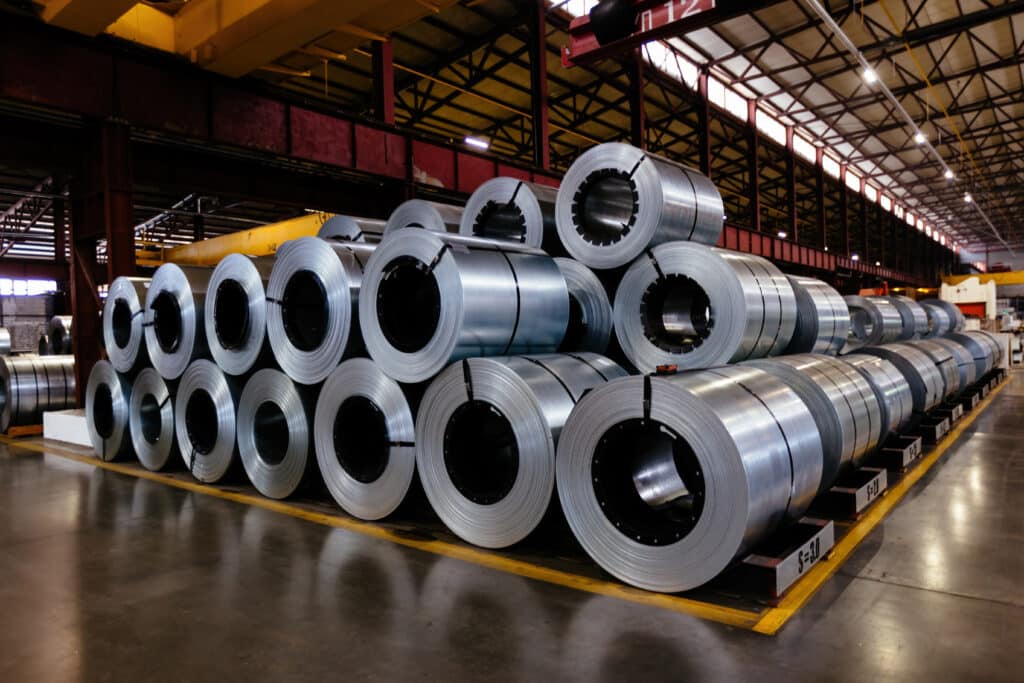Moving Steel Coils Inside Your Facility: What You Need to Know

May 29, 2025
Share:
Steel coils are critical raw materials in industries ranging from automotive to heavy fabrication. Inside production facilities, these heavy coils need to be moved safely between storage, processing, and staging areas. Coil transporters are built for this purpose—reducing reliance on overhead cranes, increasing floor safety, and improving production flow. There are three primary transporter types to consider: spike, cradle, and custom-configured units.
Why Facilities Need to Move Steel Coils
Coil movement is essential to nearly every stage of manufacturing. Common reasons include:
- Delivering coils to uncoilers, slitting lines, or forming equipment
- Transporting raw material to active production cells
- Relocating coils for inspection or intermediate storage
- Moving finished coils to shipping docks or storage bays
Using forklifts or cranes for these tasks introduces safety risks and workflow inefficiencies. Coil transporters provide a safer, purpose-built solution with better control and less operator strain.

Spike Coil Transporters
Spike transporters secure coils upright by inserting a steel post through the center of the coil. This keeps the load compact and stable.
Best for:
- Coils with standard-size inner diameters
- Fast, forklift-assisted loading
- Space-constrained facilities
The upright orientation saves floor space and keeps the coil from rolling, making it ideal for environments with limited maneuvering room.
Cradle Coil Transporters
Cradle transporters carry coils horizontally in a supportive “V” or saddle-like structure. They provide broad surface contact and easy access for overhead loading.
Best for:
- Coils of varying diameters and materials
- Delicate or coated coils requiring gentle handling
- Facilities using cranes for coil placement
Cradle-style transporters reduce the chance of damage to the coil surface and allow for stable horizontal orientation throughout the move.
Custom Coil Transporters
When facilities handle more than just coils—or need to accommodate unique sizes, weights, or load types—custom transporters offer flexibility. These units are engineered around your operational needs and can combine multiple support methods into a single platform.
One recent example features a flatbed transporter that carries dies and steel coils. The unit has V-shaped channels to support large coils, locking vertical poles to secure smaller upright coils, and is designed to safely carry heavy tooling or stamping dies. The transporter includes onboard storage compartments for accessories, stair access for safe coil placement, a low-profile lithium-ion battery system, and remote control for precise operation with the option to upgrade to full automation at a future date.
Best for:
- Facilities moving both coils and dies
- Operations requiring fewer machines with broader functionality
- Operations requiring custom dimensions, power, or load handling features
Whether you’re staging raw material for production or transporting finished coils across the floor, choosing the right coil transporter reduces risk and keeps your operations moving efficiently. Spike and cradle transporters are proven solutions for standard workflows, while custom models deliver added versatility for complex requirements.
Start by identifying your coil specs, handling frequency, and whether combining functions into a single unit could eliminate downtime or extra equipment. The right transporter should fit your operation—not the other way around.














